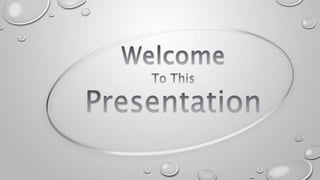
Probability
- 4. OUT LINE HISTORY OF PROBABILITY Basic concepts of probability Where is probability used in real life? Classifications of Probability USEFULNESS IS THE CONCEPT OF PROBABILITY
- 5. HISTORY OF PROBABILITY A gambler's dispute in 1654 led to the creation of a mathematical theory of probability by two famous French mathematicians, Blaise Pascal and Pierre de Fermat. ... Because of the inherent appeal of games of chance, probability theory soon became popular, and the subject developed rapidly during the 18th century. The story of probability is called The distribution .
- 6. Basic concepts of probability A probability is a number that reflects the chance or likelihood that a particular event will occur. Probabilities can be expressed as proportions that range from 0 to 1, and they can also be expressed as percentages ranging from 0% to 100%.
- 7. Probability is widely used in all sectors in daily life like sports, weather reports, blood samples, predicting the sex of the baby in the womb, congenital disabilities, statics, and many. Where is probability used in real life?
- 8. Classification of probability There are three major types of probabilities: Theoretical Probability. Experimental Probability. Axiomatic Probability.
- 9. THEORETICAL PROBABILITY Theoretical probability is a method to express the likelihood that something will occur. It is calculated by dividing the number of favorable outcomes by the total possible outcomes. The result is a ratio that can be expressed as a fraction (like 2/5), or a decimal
- 10. EXPERIMENTAL PROBABILITY The experimental probability of an event occurring is the number of times that it occurred when the experiment was conducted as a fraction of the total number of times the experiment was conducted.
- 11. Axiomatic Probability Axiomatic Definition of Probability can be defined as a set function P(E) which assigns to every event” E “a number known as the “probability of E” such that, The probability of an event P(E) is greater than or equal to zero P(E) ≥ 0 The probability of the sample space is equal to one. P(Ω) = 1
- 12. USEFULNESS IS THE CONCEPT OF PROBABILITY Studying probability will help children to develop critical thinking skills and to interpret the probability that surround us daily. Students should begin by doing simple experiments like the coin and dice toss.
